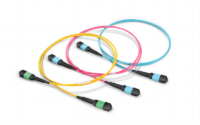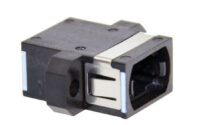Essential Aspects of Data Center Cabling Design
When it comes to designing a data center, one of the most critical elements to get right is the cabling infrastructure. Data center cabling ensures reliable and efficient communication between servers, storage devices, and networking equipment. Poor cabling design can lead to significant operational issues, including downtime, slow network speeds, and costly maintenance. To help avoid these pitfalls, here are the essential aspects to consider when designing your data center cabling system:
Cable Type Selection
The choice of cables is foundational in any cabling design. The type of cable you use will depend on several factors, including the data transmission rate, distance, and bandwidth requirements.
Fiber Optic Cables: These are ideal for high-speed data transmission over long distances. With their immunity to electromagnetic interference (EMI), fiber optics are crucial in modern data centers for backbone and long-haul connections.
Copper Cables: Cat 5e, Cat 6, or Cat 6A Ethernet cables are commonly used for short to medium-range connections. While fiber is preferred for backbone infrastructure, copper cables still play an important role in connecting devices within server racks and other short-distance applications.
Choosing the correct type of cable ensures that your network will meet the performance standards needed for your operations and growth.
Scalability and Flexibility
One of the most important considerations for data center cabling is scalability. As your data center grows and new technologies emerge, your cabling system should be able to accommodate additional equipment and increased data demands.
Modular Design: By using a modular approach to cabling, you can easily add more cables, racks, or connections without having to redesign the entire infrastructure. This flexibility will save time and costs in the future.
Cable Management: Proper cable management systems (such as trays, conduits, or racks) can prevent cabling from becoming a tangled mess, which would make future expansions more difficult. Structured cabling solutions are essential to maintaining a scalable and adaptable data center.
Planning for future needs, rather than just focusing on current requirements, will ensure that your data center remains operational and efficient as your business grows.
Redundancy and Reliability
Data centers are mission-critical environments, meaning downtime is not an option. As part of a reliable cabling design, you should integrate redundancy at multiple levels to ensure continuous service, even if part of the system fails.
Pathway Redundancy: Redundant pathways for cables can help maintain connectivity if one pathway is damaged. You might employ a dual-path system for critical links, allowing failover between pathways in case of a cable or switch failure.
Cabling Standards and Best Practices: Following industry standards such as TIA-942 and ANSI/TIA-568 ensures that your cabling is reliable, reducing the chance of failure due to poor installation or subpar materials. Moreover, using high-quality, certified cables with low bit error rates helps prevent data transmission issues.
Testing and Documentation: Once the installation is complete, conduct thorough testing to verify that all cables perform to spec. Additionally, documentation for cable layouts and paths is essential for future maintenance and troubleshooting.
Redundancy and reliability must be at the core of your design, as they are directly tied to minimizing potential service disruptions.
Cable Density and Space Optimization
Data centers are known for housing large volumes of equipment in tight spaces. As you plan your cabling system, it’s essential to optimize the use of space to ensure efficient cable routing and easy maintenance.
High-Density Cabling Solutions: In many data centers, especially in areas with limited space, high-density patch panels and modular jacks can help reduce the number of individual cables needed. This will allow more devices to be connected within the same rack space.
Vertical Cabling: Vertical cable management systems can also help maximize floor space, as cables are routed upwards or downwards, taking advantage of the unused space above or below racks.
Cable Length Optimization: Properly measuring cable lengths will reduce the need for excess cable, which can create unnecessary clutter and obstruct airflow, potentially affecting equipment cooling.
Efficient use of space and cable density is vital for optimizing data center performance and ensuring that the cabling infrastructure remains manageable and efficient over time.
Improve Data Center Efficiency Using Tarluz’s High-Performance Cabling Solutions
When you choose Tarluz for your data center cabling, you ensure uniform quality throughout your infrastructure. Tarluz provides a wide range of products, including copper and fiber optic cables, along with cable management tools—each crafted for effortless integration. This streamlined approach not only simplifies installation and maintenance but also boosts system performance and reliability. With Tarluz, every component adheres to the highest industry standards, offering a flexible, scalable solution to meet both today’s and tomorrow’s network needs.
TARLUZ offers a comprehensive range of products and solutions, including copper cabling, fiber cabling products, and cable management tools.This table includes a variety of fiber cabling, copper cabling, and cable management products:
Fiber Cabling Fiber Optic Patch cord MTP/MPO Fiber Cable Cassette and Rack Chassis
Copper Cabling Active Optical Cable Direct Attach Cables
More details: Article
In Conclusion
Designing the cabling infrastructure for a data center is not just about choosing cables and connecting devices; it’s about building a foundation that supports reliability, flexibility, scalability, and performance. By selecting the right cables, planning for future growth, incorporating redundancy, and optimizing cable management, you ensure your data center is equipped to handle increasing demands while remaining efficient and operational.Remember, a well-designed cabling system contributes significantly to the overall performance and longevity of your data center—an investment that will pay off in terms of reduced downtime, lower maintenance costs, and greater flexibility for future growth.
Explore more: For more information on Date center, visit TARLUZ.com or contact our experts for personalized advice.


